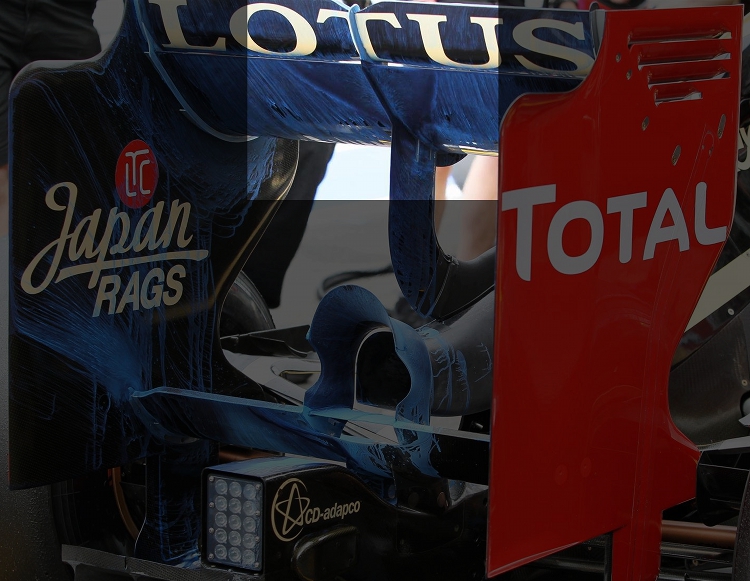Kimmi race it once in Britain GP 2013.bhall II wrote: (Lotus' DDRS was never raced.)
- Login or Register
No account yet? Sign up
Kimmi race it once in Britain GP 2013.bhall II wrote: (Lotus' DDRS was never raced.)

No need to redo any homework I have the CFD simulation file on my computer still. Haven't changed it at all. Check one of Ringo's posts for the video of it switching.scarbs wrote:
To entrain air you need a lower pressure fluid stream. Not a lot you say, not a lot is subjective I know. Well the F-duct worked by creating a near vacuum. In the Mclaren car, the driver blocks off a hole cutting off all entrained air flow that was coming from the cabin. This dropped the pressure even more in the "X" shaped junction in the system ducts: The main stream duct, the switching duct, the wing blowing duct and the "vent" duct, thus creating an momentum change diverting the main stream of air away from the duct leading to the Rear wing, stalling it.
With that said, you can see the challenge you will face using the waste gate exhaust to do this without creating a low enough pressure. I am at work but maybe I can do a quick sketch.. or maybe I can do it tomorrow.
I think you need to redo your Homework on the operation of McLaren F Duct. The wastegate switched F Duct is still a realistic concept.


I stand corrected. It was used once over two-year period of development.aleks_ader wrote:Kimmi race it once in Britain GP 2013.
I suppose so.Otherwise Voiceless Entity wrote:Hey, isn't it true that some teams have undertaken a transition to diffuser layouts that direct underbody air flow toward the outside edges in order to utilize the low-pressure wake behind the brake ducts as if they're small beam wings? I mean, just look at those streaklines...
If so, doesn't that mean the diffuser won't necessarily stall if aerodynamically decoupled from the rear wing, or if it does, that the situation isn't as hopeless as you initially stated?
That does seem like it would be a significant stumbling block.Otherwise Voiceless Entity wrote:Even though Lotus' "device" clearly didn't meet expectations, how likely is it that the biggest problem faced by the team was a design that passively relied on difficult-to-tune pressure thresholds to activate and deactivate the system?
Maybe.Otherwise Voiceless Entity wrote:So, it's possible a more active switch could have made it a viable solution?
Shut up.Otherwise Voiceless Entity wrote:And why is it taken for granted that the utility of a monkey seat is incompatible with a stalling device? Isn't it at least theoretically possible to realize the monkey seat's effect in a different manner, one capable of coexisting with a stalling device?

Show me where anyone said otherwise.PlatinumZealot wrote:Why would you want to stall it?!
Pat Symonds in the October 2012 issues of F1 Racing wrote:At Monza, ride heights have to be set low enough to promote some stall in the diffuser at high speed while maintaining grip at around 130mph as the car pitches, yaws and rolls through the tricky second part of the Ascari chicane. As the DRS is activated on the straight, the stall invoked in the rear wing has to promote a more generalised stall through the beam wing and diffuser and, in so doing, shed the speed-sapping drag that is an inescapable feature of downforce.

Again, show me where anyone has even so much as hinted at something to the contrary.PlatinumZealot wrote:In the context of what you guys are talking about;- like you would have a stalled rear wing, wholesale break up of air flow, I am saying that is not wise to do that for the diffuser.



Good point. I think it is a trade off... Stalled wing means you need less power down the straights. Which means you can afford to blow off a bit of exhaust... it has to be analysed some more.dren wrote:Wouldn't using the waste gate exhaust gasses to stall the rear wing be counter productive towards overall PU performance? I would think the waste gate would be open more than you'd want.
